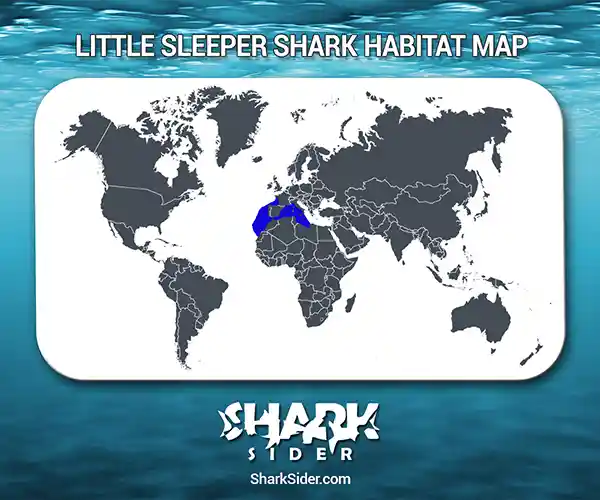The Little Sleeper shark is a small, bottom-dwelling sleeper shark found in the Northeastern Atlantic, western Mediterranean, and Western Pacific. It gets its name from its typical slow and sluggish behavior. It is a rare shark, andresearchers know little about this species.
Little Sleeper Shark Scientific Classification |
|
| Kingdom | Animalia |
| Phylum | Chordata |
| Class | Chondrichthyes |
| Order | Squaliformes |
| Family | Somniosidae |
| Genus | Somniosus |
| Scientific name | S. rostratus |
Description
These sharks can grow to 140 cm (4.6 ft), with the longest recorded specimen measuring 143 cm (4.7 ft). The females are typically longer, reaching 82-134 cm (2.7-4.4 ft). In comparison, males average 70 cm (2.3 ft).
They have a slender, blackish body with a short, blunt snout and head. They look similar to the Frog shark but have smaller eyes and a smaller second dorsal fin. The upper teeth are spear-like, while the lower teeth are shaped for slicing. The skin is smooth with flat dermal denticles.
The dorsal fins are spineless, with the first positioned closer to the pectoral than the pelvic fins. The tail fin is short, with a longer upper lobe, short lower lobe, and lateral keels on the base. There is no anal fin.
Where do they live
Map Of The Little Sleeper Shark’s Habitat

The little sleeper shark is found in the Northeastern Atlantic near Madeira and France, in the western Mediterranean,New Zealand and Japan in the Western Pacific, and Israel and Cuba.
It is a bottom-dwelling shark inhabiting the sandy outer continental slopes at depths of 200-2,200 m (656-7,218 ft). However, it may live at even greater depths.
Behavior
Dietary
Researchers assume that their diet primarily consists of bony fishes and invertebrates that live on or near the sea floor.
Predatory
Remains of fast-moving prey in their stomachs indicate a tendency to scavenge or ambush prey and hunt in the deeper parts of the ocean, which might explain their rarity.
Reproductive
The females are ovoviviparous and have 8-17 pups every litter, measuring 21-28 cm (0.7-0.9 ft) at birth. Males reach sexual maturity when they grow to 71 cm and females at 80 cm.
Adaptations
Like most sharks, it has a highly developed sense of smell and vision, a smooth, streamlined body, and sharp teeth to help catch prey.
Human interactions
Due to their rarity and deepwater habitat, they are considered harmless to humans. They are usually discarded at sea when caught as bycatch by longlines and bottom trawlers. However, discarded fish have a meagre survival rate. They are sometimes used for consumption or as fishmeal.
Currently, there are no conservation measures for little sleeper sharks due to a lack of data, but the use of trawlers below 1000 m has been banned in the Mediterranean for conserving deepwater species.
The IUCN has thus classified them as “Least Concern” or “LC.”
